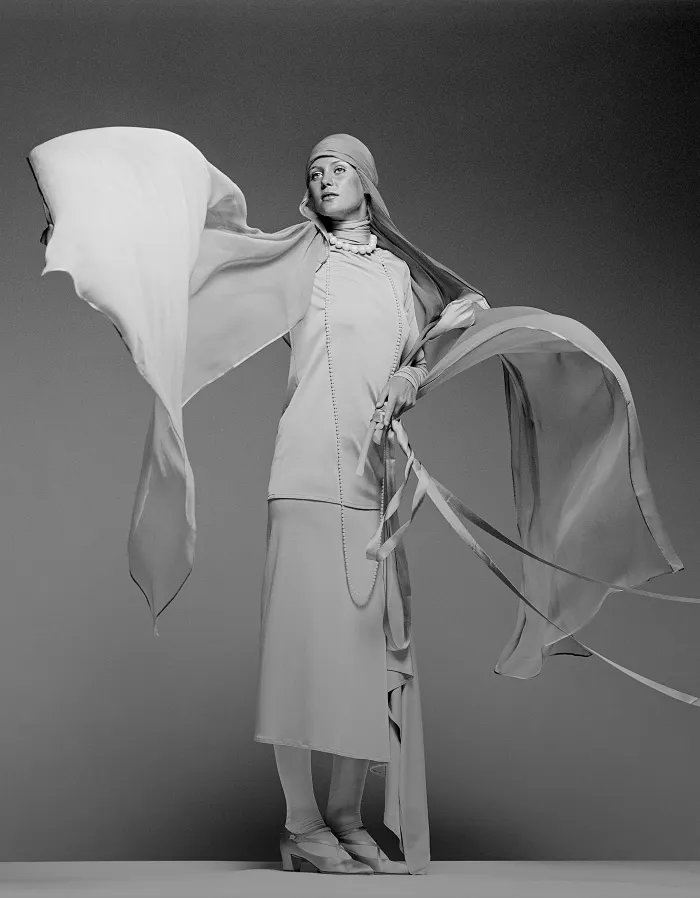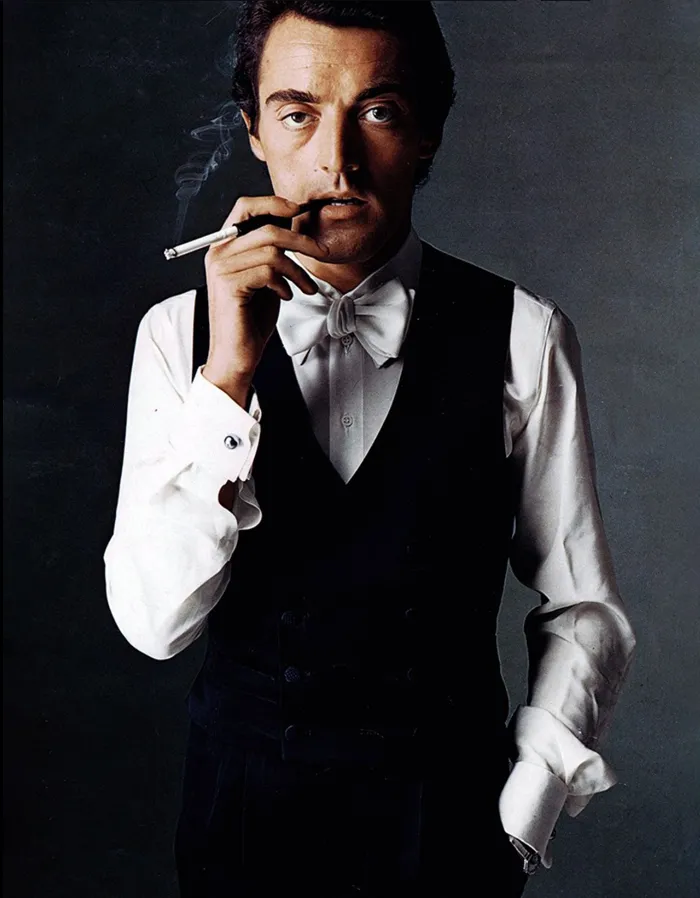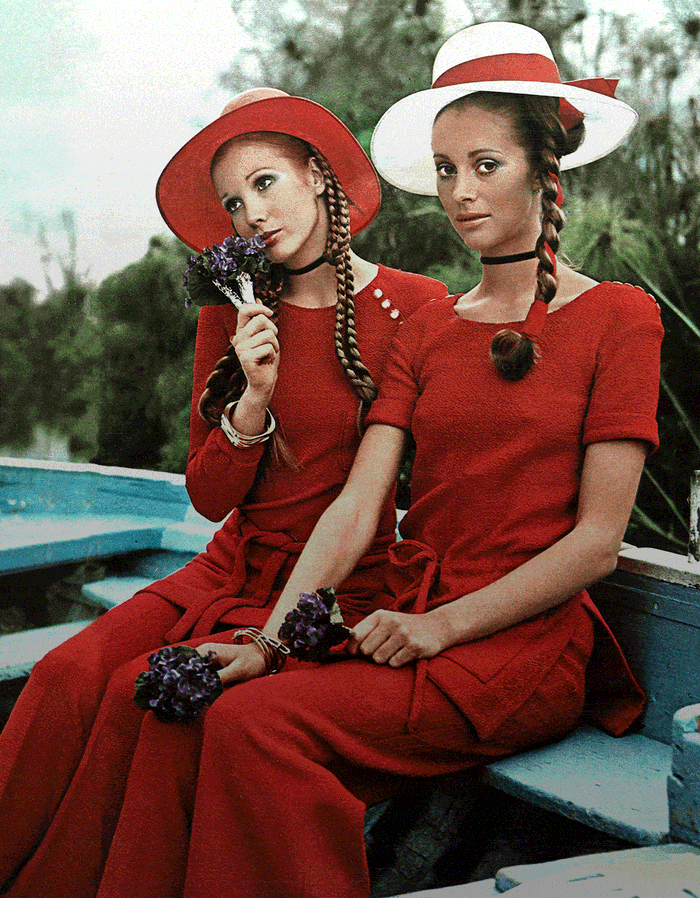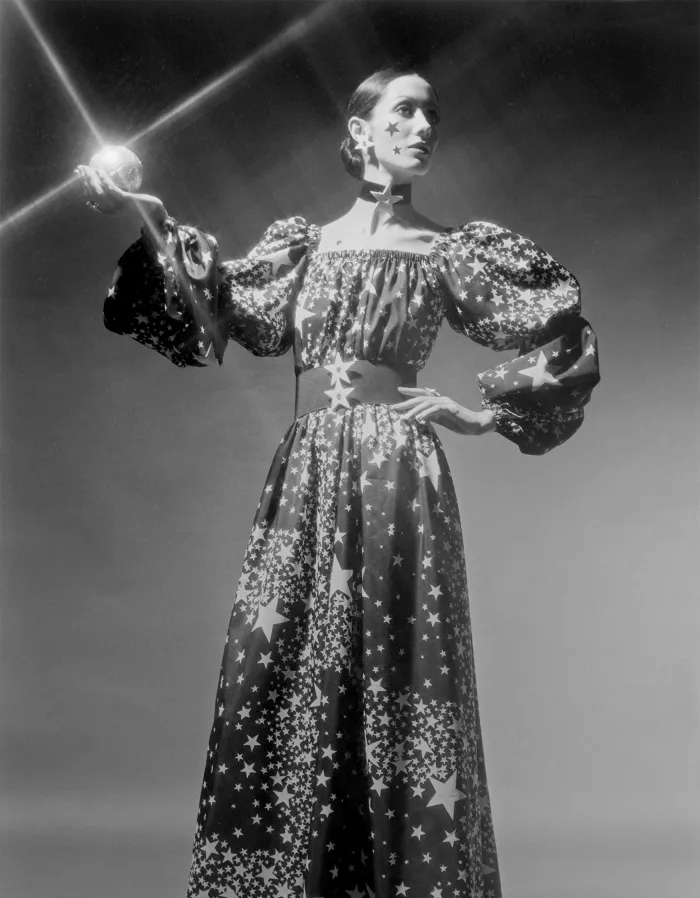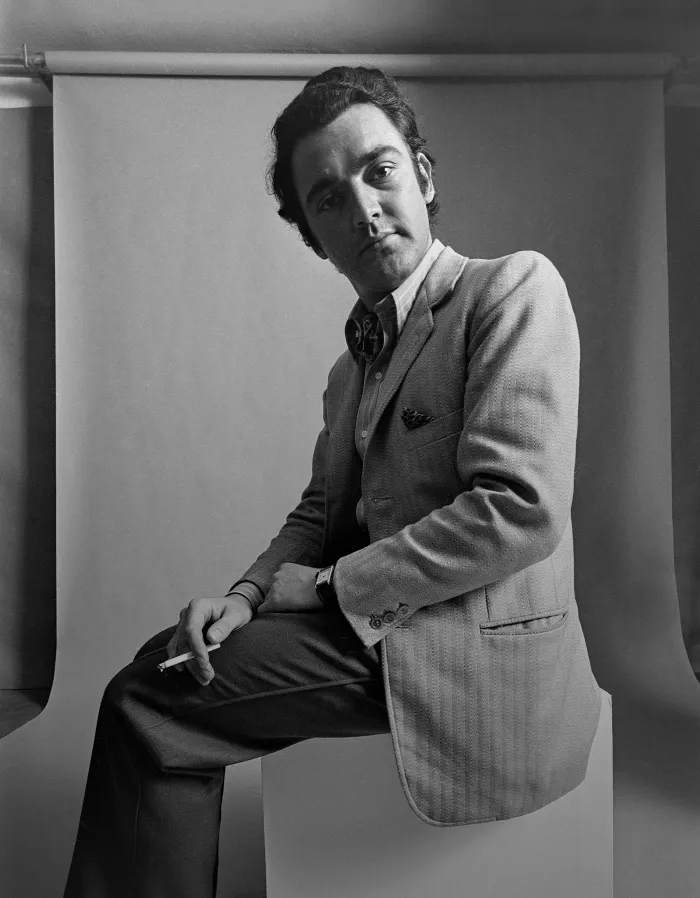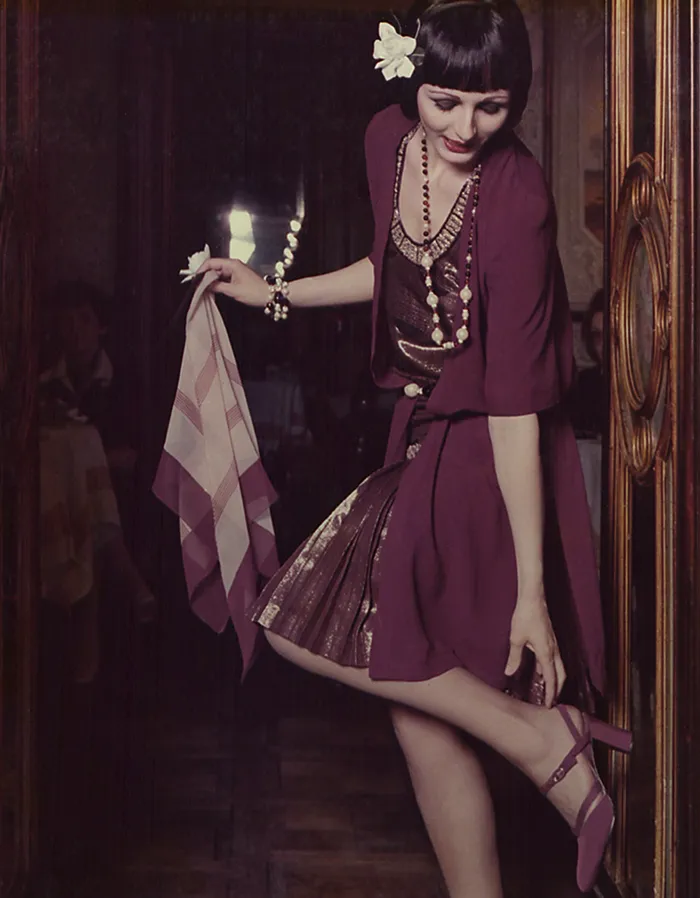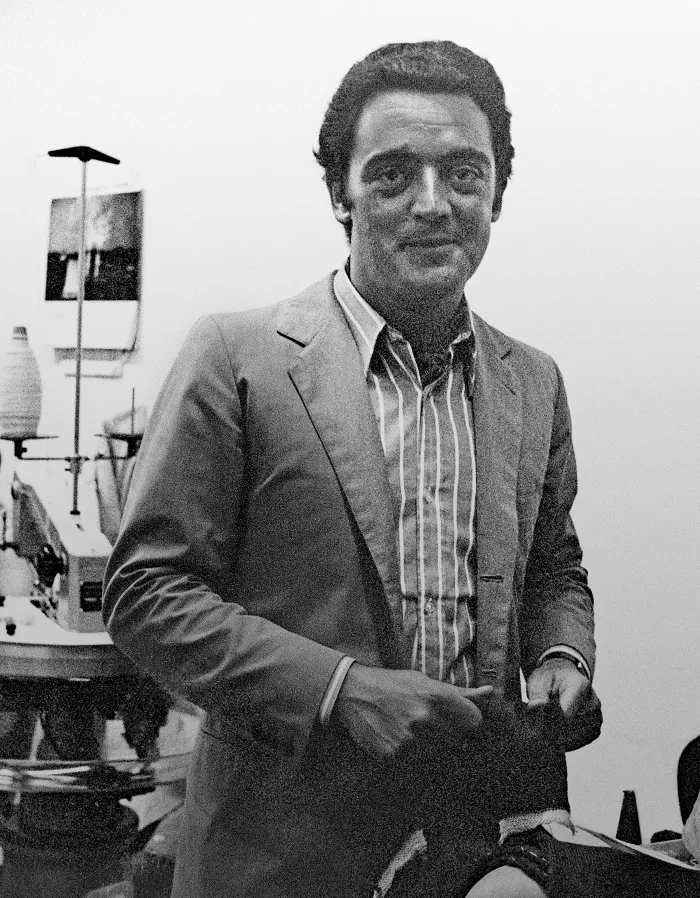About
Walter Albini was a transformative force in the fashion industry. Scroll to hear and discover more about his powerful journey, from forging his path as a teenager to his career highlights.
A transcript of the full biography is available below.
WALTER ALBINI (1941 – 1983)
A TRANSFORMATIVE FORCE IN THE HISTORY OF FASHION
Walter Albini was born in Busto Arsizio on March 3, 1941.
His interest in fashion design manifested at an early age and he enrolled at the institute “Italo Cremona” in Turin, just aged 16, as the first male student in this previously female-only educational institution.
As a first professional foray into the industry, he began to work with newspapers and magazines, using his talent as an accomplished illustrator and graphic designer for various fashion magazines and publications, contributing sketches from fashion shows in Rome and later Paris.
He lived in Paris from 1961-1965, working for the styling agencies of Maimè Arnodin and Denise Fayolle, for which he designed prints and patterns for fabrics. It is in the city of lights that he fell in love with the style and philosophy of Coco Chanel, who remained a strong influence throughout his later collections.
In 1963, he created his first collection for Gianni Baldini. After meeting Mariuccia Mandelli, the famous fashion designer known as Krizia, he moved back to Milan to start a collaboration with her that would last for three years. During his final season at Krizia, he worked alongside a young Karl Lagerfeld.
Krizia allowed him to continue his exploration of design, working with different materials and techniques – from knitwear to the study of yarns, from production to the study of fabrics. By the end of the 1960s, he was also designing for some of the other most influential Italian fashion houses of the time, including Billy Ballo, Cadette, Cole of California, Montedoro, Misterfox, Glans, Annaspina, Paola Signorini, and Trell.
During this time, Albini ushered in a new era for production methods, in particular the need for a different relationship between the designer and the manufacturer. With this pioneering mindset, Albini spearheaded the idea of brand collaborations, most notably with Etro on printed fabrics, and later on with Ferré on costume jewelry, paving the way for collaborations between creative minds.
By the early 1970s, Albini had established himself as one of the most sought-after designers in Italy working for the manufacturing industry. However, he dreamed of a line bearing his own name. Albini revolutionized the industry by creating a fashion show under his own name, bringing together five manufacturers from different sectors under a single collection of ready-to-wear, establishing the concept of the “total look.”
He made the bold decision to be the first designer to leave Florence’s historic Palazzo Pitti in favor of Milan, effectively initiating Milan’s “Collezioni Donna.” His pioneering work and transformative attitude marked the birth of the ready-to-wear movement in Italy.
His Autumn/Winter 1971-72 collection was a huge success amongst press and buyers. Simultaneously, Albini invented a new way of advertising, using only drawings and establishing the concept of “groupage” in specialist magazines. It is the suppliers who paid for the pages, not the designers.
By 1973, he was recognized internationally as one of the biggest fashion designers emerging from Italy, alongside other contemporaries such as Armani and Versace. He decided to establish the Walter Albini label, produced by Misterfox.
With the help of Joan Burnstein, owner of renowned Browns boutique in London, he presented a catwalk show in the English capital. On this occasion, he introduced the unstructured jacket, which would go on to become another fashion mainstay for decades to come. The collection also marked the introduction of another innovation for the industry; showcasing a main line with a strong image with restricted sales, supported by a second collection with much wider commercial appeal.
By the mid 1970s, Albini’s creative talent lacked the structured commercial support to match his ambitions. Following a period of extensive international travels, Albini reemerged on the fashion scene with the presentation of a stand-alone menswear collection in 1974, once again anticipating the trends of the years to follow.
1975 marked another first for the designer, with two successive Haute Couture fashion shows, in collaboration with Giuseppe Della Schiava. On the ready-to-wear front, his collaboration with Trell resulted in some of the most revered collections of his life, such as “Guerriglia Urbana,” “India” and “Folk”.
In his Autumn/Winter 1975-76 collection, he featured both male and female models to underline the concept of unisex fashion. He continued to explore novel ways of showcasing his work, for example by presenting his collections in the form of a photography exhibition at an art gallery, rather than by reverting to traditional fashion shows.
After breaking ties with Trell in 1978, Albini relaunched his eponymous label in collaboration with Mario Ferrari, creating three collections. The long-anticipated Autumn/Winter 1978-79 collection went on the catwalk in Milan in front of 3,000 spectators. It was a great success, as was the subsequent collection, Spring/Summer 1979. But the relationship with Ferrari ended abruptly after the Autumn/Winter 1979-80 show. In the years that follow, he continued to design for different manufacturers.
He had homes in Milan and Venice, Italy – as well as Sidi Bou Said in Tunisia; he travelled globally and took inspiration from various cultures and art forms.
He expressed himself via art, fashion, interiors, costume design for theatre and cinema, creating a rich and multi-dimensional world.
Walter Albini passed away on May 31, 1983 in Milan at the early age of 42. Although he was soon forgotten after his untimely death, his legacy continues to inspire and inform many influential designers.















